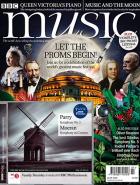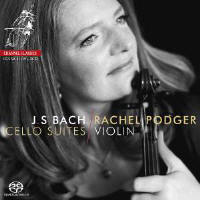Texte paru dans: / Appeared in:
Channel Classics |
|
|
Appréciation d'ensemble / Overall evaluation :
|
|
|
Reviewer: Even in the hands of a master cellist there are certain physical and acoustic properties inherent to the cello that (quite naturally) form an intimate connection with any interpretative overview. As a result, the overriding impression we have of this music is one of enhanced lower resonance – even when using a period instrument or copy – and of certain inbuilt expressive properties imparted by the cello’s rich bass and plangent tenor regions, and the enhanced clarity and directness of its upper partials. The violin is a different kind of instrument in nearly every way – not just in terms of pitch and expressive personality, but most crucially in these particular works, rapid string-crossing and multiple-stopping are more elegantly achievable without any sense of ‘snatching’.
As a result, the effect of listening to Rachel Podger’s captivating performances is akin to a sense of the music having been in some way ‘freed-up’. Music that one thinks of instinctively as boldly etched, deeply (in every sense) introspective and eliciting a melancholic sense of struggle becomes more dance-like, airy and freewheeling. This is not to suggest that these supreme masterpieces are anything but intimately bound up with the cello’s unique soundworld and technical proclivities – the writing is quite different much of the time compared to the solo violin partitas and sonatas. Yet there is an enhanced technical comfort, agility and tonal clarity, not to say brightness of sound, associated with the violin that at the very least creates an illusion (no matter how synthetic) of the music having had a good spring clean.
Of course, this would count for virtually nothing if it wasn’t for Podger’s insightful performances. Without mannerism, distortion or furrowed-brow reverence, she somehow creates the sensation of composing the music as she goes along. If one didn’t know they were intended for the cello, one would naturally assume the suites were violin originals after experiencing her life-enhancing playing, which keeps the ear focussed (affectionately) on the music pure and simple – and for once we are spared the interpretative subtext of ‘Artist at Work.’ This is felt most keenly in the famous Sarabande from the Fifth Suite, which is subtly tinged with a wistful reflectiveness rather than loaded with expressive rhetoric in every phrase.
The effect is akin to a sense of the music having been in some way ‘freed-up’.
Those listeners
familiar with the suites in their original cello guise may experience a feeling
of enhanced harmonic coherence due to the violin’s more restrained resonance and
narrower intonational field. Those with a keen sense of relative key colour may
also detect changes in tonal perspective due to the necessary transpositions
involved – the Second Suite, for example, moves from a rich D minor to the
unadorned immediacy of A minor. With the help of expert technical team Jonathan
Freeman-Attwood and Jared Sacks, Podger even manages to interpolate certain low
notes in the ‘five-string’ Sixth Suite using a viola C string without the
slightest hint of the ‘trickery’ involved. A spellbinding set that is arguably
Podger’s finest recorded achievement to date. | |
|
|
|
|
|
|
|
Cliquez l'un ou l'autre
bouton pour découvrir bien d'autres critiques de CD |
|




